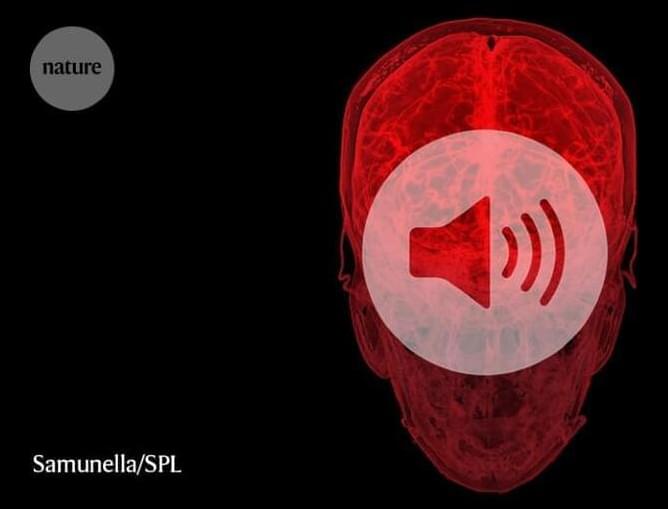Experts have discovered that the human brain has structures and forms with up to 11 dimensions, which is a remarkable finding. “We discovered a realm that we had never envisaged,” neuroscientists said of the finding. Algebraic topology mathematical approaches have aided researchers in discovering structures and multidimensional geometric spaces in brain networks. A recent study, according to specialists, has demonstrated that the human brain has structures and forms with up to 11 dimensions. According to Science Alert, our brains have an estimated 86 billion neurons, with many connections from each cell stretching in every imaginable direction, making a super-vast cellular network that SOMEHOW allows us to think and be conscious.
Category: mathematics – Page 101
Gravity with an ON/OFF Switch | André Fuzfa | TEDxUHasselt
At present, scientists study gravitational fields passively. They observe and try to understand existing gravitational fields produced by large inertial masses such as stars or planets, without being able to change them, as with magnetic fields. It was this frustration that led Füzfa to attempt a revolutionary approach: creating gravitational fields at will from well-controlled magnetic fields and observing how these magnetic fields could bend space-time.
In his article, Füzfa has proposed, with supporting mathematical proof, a device with which to create detectable gravitational fields. This theoretical device is based on superconducting electromagnets and therefore relies on technologies routinely used, for example, at CERN or the ITER reactor.
https://phys.org/news/2016-01-paper-method-gravitational-fields.amp.
Ted Talk YouTube
Listen to the story told by André Fuzfa, the physicist with the radical.
A New Puzzle Turns Earth Into a Rubik’s Cube, but More Complex
Another orbit around the sun and here we are again: back where we started but spun about — changed, perhaps deranged.
Henry Segerman, a British American mathematician and mathematical artist at Oklahoma State University, has invented just the puzzle for this disorienting annual event: Continental Drift, a 3D sliding puzzle that made its debut earlier this year. The underlying geometric concept is holonomy: When you travel a loop on a curved surface and return to the starting point, you arrive somewhat turned around, rotated, perhaps by 180 degrees.

Gödel’s Incompleteness Theorems: History, Proofs, Implications
In 1931, a 25-year-old Kurt Gödel published a paper in mathematical logic titled “On Formally Undecidable Propositions of Principia Mathematica and Related Systems.” This paper contained the proofs of two remarkable “incompleteness theorems,” which state:
For any consistent axiomatic formal system that can express facts about basic arithmetic.
1. there are true statements that are unprovable within the system 2. the system’s consistency cannot be proven within the system.

ChatGPT fails PSLE after acing Wharton Business School exam
Was given test for Singapore students and failed.
The publication compared ChatGPT with students who have taken the PSLE in the past three years using questions from the latest collection of past year papers that are available in bookstores.
ChatGPT received a mere 16 out of 100 points for three math papers, 21 points for the science papers, and 11 out of 20 for the English papers.
The bot was limited in that it was unable to answer questions that involved graphics or charts, receiving zero points for those sections. It, however, performed relatively better in answering questions that it could attempt to solve and managed to answer more than half of the questions in the maths papers and a quarter of the science papers’ questions, which predominantly included graphs as part of the questions.

Cancer evolution is mathematical
Cancer is not a uniform disease. Rather, cancer is a disease of phenotypic plasticity, meaning tumor cells can change from one form or function to another. This includes reverting to less mature states and losing their normal function, which can result in treatment resistance, or changing their cell type altogether, which facilitates metastasis.
In addition to direct changes in your DNA in cancer, a key driver of cancer progression is where and when your DNA is activated. If your DNA contains the “words” that spell out individual genes, then epigenetics is the “grammar” of your genome, telling those genes whether they should be turned on or off in a given tissue. Even though all tissues in the body have almost exactly the same DNA sequence, they can all carry out different functions because of chemical and structural modifications that change which genes are activated and how. This “epigenome” can be influenced by environmental exposures such as diet, adding a dimension to how researchers understand drivers of health beyond the DNA code inherited from your parents.
I’m a cancer researcher, and my laboratory at Johns Hopkins University studies how the differences among normal tissues are controlled by an epigenetic code, and how this code is disrupted in cancer. In our recently published review, colleague Andre Levchenko at Yale University and I describe a new approach to understanding cancer plasticity by combining epigenetics with mathematics. Specifically, we propose how the concept of stochasticity can shed light on why cancers metastasize and become resistant to treatments.

Marvelling at the mystery of consciousness through a scientific lens
In the second episode of this 12-part podcast series, Tales of the Synapse, neuroscientist Anil Seth describes his research into consciousness, which he describes as “insurance against falling into a single, disciplinary hole.”
Alongside neuroscientists, Seth’s research group at the University of Sussex in Brighton, UK, also includes string theorists, mathematicians and psychologists. The team also collaborates with academics in the arts and humanities.
His 2021 book Being You: A New Science of Consciousness. begins by challenging the idea that consciousness is beyond the reach of science, and concludes with a look at consciousness in non-human animals, before asking if artificial intelligence will one day become both sentient and conscious.

Significance of mathematical modeling in understanding complex biological processes
Humans and animals detect different stimuli such as light, sound, and odor through nerve cells, which then transmit the information to the brain. Nerve cells must be able to adjust to the wide range of stimuli they receive, which can range from very weak to very strong. To do this, they may become more or less sensitive to stimuli (sensitization and habituation), or they may become more sensitive to weaker stimuli and less sensitive to stronger stimuli for better overall responsiveness (gain control). However, the exact way this happens is not yet understood.
To better understand the process of gain control, a research team led by Professor Kimura at Nagoya City University in Japan studied the roundworm C. elegans. They found that, when the worm first smells an unpleasant odor, its nerve cells exhibit a large, quickly increasing, and continuous response to both weak and strong stimuli. However, after exposure to the odor, the response is smaller and slower to weak stimuli but remains large to strong stimuli, similar to the response to the first exposure to the odor. Because the experience of odor exposure causes more efficient movement of worms away from the odor, the nerve cells have changed their response to better adapt to the stimulus using gain control.
Then the researchers used mathematical modeling to understand this process. Mathematical modeling is a powerful tool that can be used to better understand complex biological processes. They found that the “response to first smell” consists of fast and slow components, while the “response after exposure” only consists of the slow component, meaning that the odor experience inhibits the fast component to achieve gain control. They further found that both responses could be described by a simple differential equation and that the slow and fast components correspond to the leaky integration of a first and second derivative term of the odor concentration that the worm senses, respectively. The results of this study showed that the prior odor experience only appears to inhibit the mechanism required for the fast component.

Unusual atom helps in search for universe’s building blocks
An unusual form of cesium atom is helping a University of Queensland-led research team unmask unknown particles that make up the universe.
Dr. Jacinda Ginges, from UQ’s School of Mathematics and Physics, said the unusual atom—made up of an ordinary cesium atom and an elementary particle called a muon—may prove essential in better understanding the universe’s fundamental building blocks.
“Our universe is still such a mystery to us,” Dr. Ginges said.
Mind-Blowing AI Breakthroughs in Science (Physics, Astrophysics and Math)!
Now, THIS is useful AI — controlling Nuclear Fusion reactions.
#AI #Deepmind #GTC23
In this Video I discuss Recent AI Breakthroughs in Science — in Physics, Astrophysics… and Math!
This video is sponsored by NVIDIA.
GIVEAWAY
Please follow these steps to win NVIDIA GeForce RTX 4,080 GPU (worth 1400$):
Step-1: Please register for NVIDIA GTC using this link: https://www.nvidia.com/gtc/?ncid=ref-inpa-194623
To qualify, registrants need to have a permanent home address in Europe, Middle East, or Africa.
Step-2: Wait for the GTC to start and join the Keynote livestream.
Step-3: Attend GTC sessions. Prizes will be awarded only to those who register for GTC using the link above and attend at least one session (keynote excluded). This giveaway is exclusive to my community — one winner will be selected from my subscribers. Good luck!
Some of GTC Sessions which I will attend: